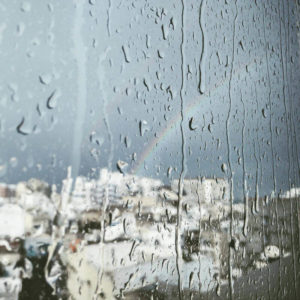Many homeowners happily use their fireplaces for years, naively assuming that their chimneys are in excellent working condition. That is, however, until a leak happens. The most likely culprit is water damage to the chimney structure, which can be caused by a number of different problems.
The most unfortunate fact about water damage is that it is almost entirely preventable. Unlike natural disasters or house fires, water is a consistent force that constantly wears down the bricks, mortar, and structure of your chimney. Although chimneys are built to be long-lasting structures, they too need proper upkeep.
Preventative maintenance is the best and most cost effective way to keep your chimney system in excellent working condition. It is extremely important to have annual inspections to ensure that your fireplace and chimney are free from any cracks or flaws that could cause water leakage and damage.
How does water get into my chimney?
As a chimney ages, so do its parts that are meant to prevent water from entering the chimney. This process often occurs faster than most homeowners realize as their chimneys are constantly exposed to wind, rain, snow, and the expanding and contracting caused by freezing temperatures. Although it is impossible to say what is causing a leak without a chimney leak inspection the parts of the chimney are two of the most common culprits.
Chimney cap
Chimney caps, sometimes known as rain covers, are specially fitted pieces designed to prevent water and debris from entering a chimney. Despite their sturdy design, chimney caps can become cracked, damaged, or shift from their original placements over time. Underwriters Laboratories, an international independent safety science company, specifies that “any chimney lining system that is to be listed to their test standard must include a chimney cap.”
Flashing
Flashing is the term for the material that creates a watertight seal between the roof and the chimney structure. If the flashing loses its seal, water can enter under the roof, damaging ceilings, walls, joists, rafters, and other vital structural elements. Correctly installed flashing should be made up of two parts: the flashing and the counter flashing. These two pieces allow for expansion and contraction with temperature changes, ensuring that the waterproof seal is not broken.
How can I prevent leaks?
Apart from regular maintenance and annual sweeps and inspections, the best way to prevent leaks is through waterproofing chimney maintenance. During this process, Pristine Sweeps certified technicians will apply a permeable barrier to the exterior of your chimney.
Unlike other paints which can trap moisture inside the bricks, the ChimneySaver sealants are specially designed for use on chimneys. These products block repel water while still allowing gasses to escape through the brick and masonry. This will extend the life of your chimney while ensuring that it remains safe for regular use.
Call the certified technicians at Pristine Sweeps today to schedule a chimney inspection to ensure that a tiny crack doesn’t turn into an enormous problem or to schedule waterproofing chimney maintenance.

